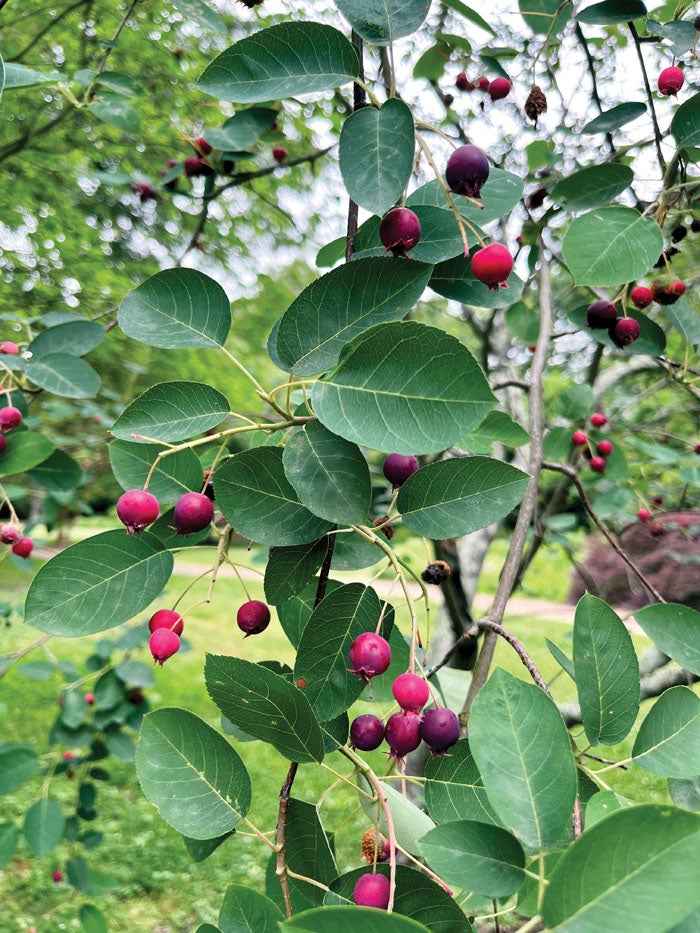Sarina Dellinger: Wildlife-friendly fall garden tasks
Published 12:05 am Saturday, August 20, 2022

- The edible fruit of the native serviceberry
By Sarina Dellinger
For the Salisbury Post
This week has been such a teaser for fall weather. For some people fall can be an exciting time to add new plants to their landscape and for others, it’s a dreaded time of leaf clean-up. Many of the summer perennials are starting to go to seed and have gardeners eager to snip the stems, but leaving them for wildlife can be beneficial to the insects and birds all winter long. Let’s go over a few more tips for a more wildlife-friendly fall gardening approach.
Leave the leaves. The butterflies and moths that flutter around all summer long depend heavily on the leaf litter to overwinter. By skipping the leaf clean-up, or minimizing it, you can provide a habitat for butterflies, lightning bugs, worms, snails and more. These are all beneficial insects to the garden, but also a great food for birds. If leaving the leaves on your lawn isn’t your idea of beautiful, you can rake them close to the trees or into a garden bed for a natural mulch.
Create a habitat with fallen limbs and sticks. In North Carolina it seems like limbs are always falling, big and small. Put these limbs to work for wildlife by creating a backyard brush pile. Stacking limbs and sticks loosely into a pile creates shelter for birds, rabbits, chipmunks, lizards and other small animals to nestle into during the winter and hide from predators. This is a no-cost way to support wildlife in your own backyard.
Add more native plants! The end of the above-ground growing season starts the beginning of the root growing season and gives your plants time to establish themselves before the blistery, dry summer days ahead. Consider adding trees and shrubs that are beautiful, but also provide nectar for insects, food for wildlife, and shelter for them to take cover under. Buckeyes (Aesculus spp.) are a workhorse in the landscape — providing nectar for insects and hummingbirds, beautiful flowers, seeds for mammals and amazing fall color. Evergreen shrubs like the eastern red cedar (Juniperus virginiana) and the American holly (Ilex opaca) will provide food, cozy shelter for birds, and screening for your home landscape. Shrubs like the American beautyberry, native viburnums, serviceberries and sweetshrub provide visual interest for humans throughout the year and are also a renewable source of bird food for years to come.
If you have questions about Hurley Park, or want to know how to book events, please give us a call at 704-638-5298. Stay up to date with what’s happening at Hurley Park by following us on Facebook or Instagram @HurleyParkNC. To view a map or donate to Hurley Park, visit our website at salisburync.gov/hurleypark. Happy gardening!
Sarina Dellinger is public garden manager for Salisbury Parks and Recreation.




